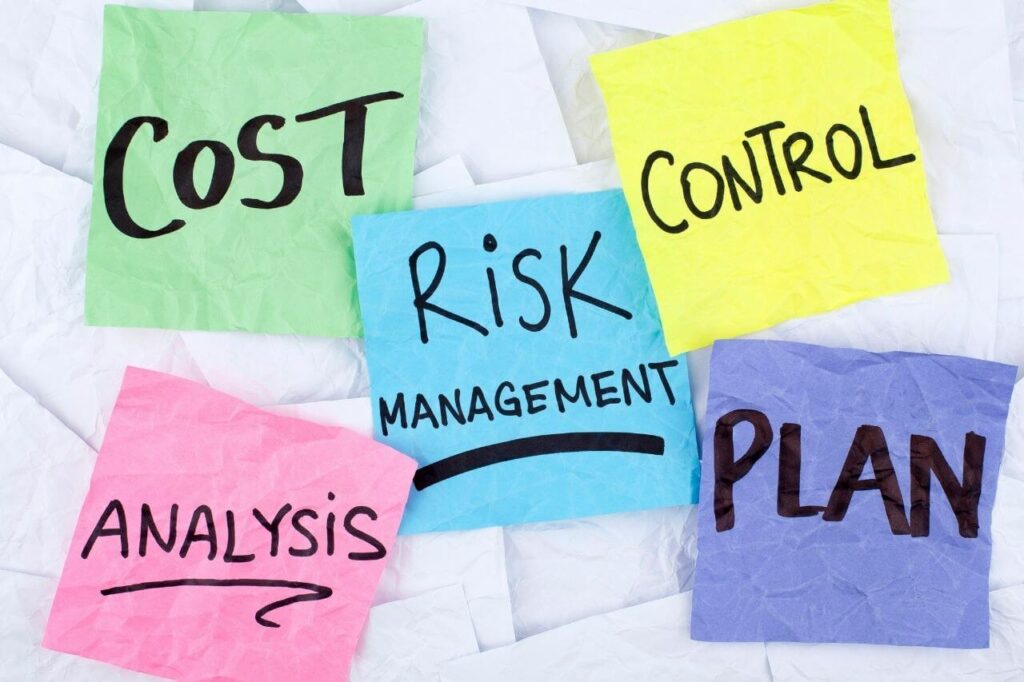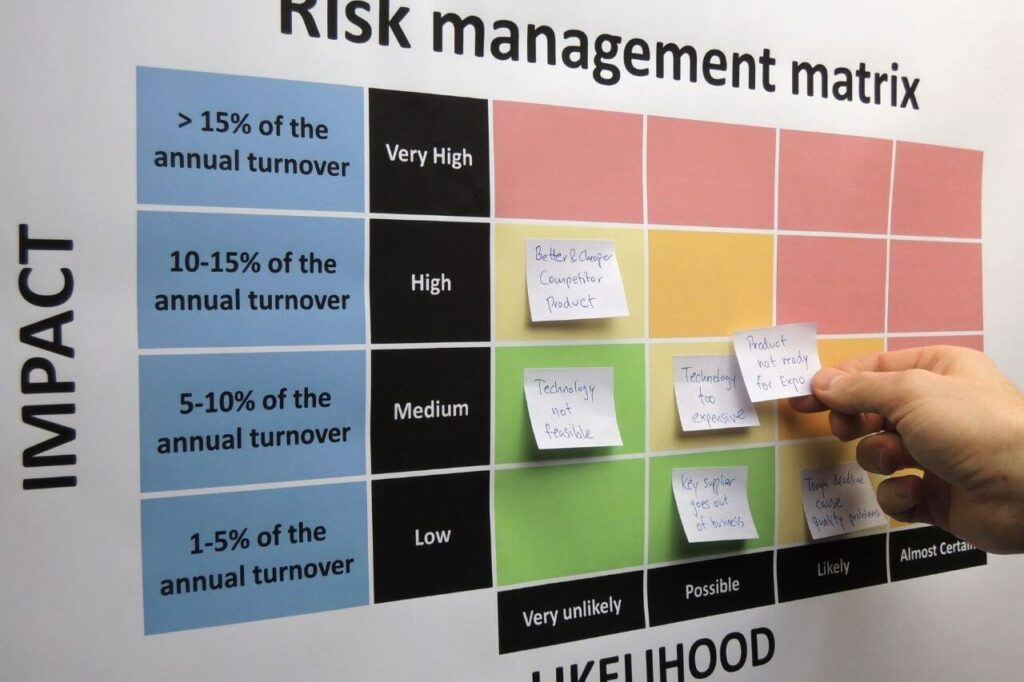When it comes to product design and development, the bottomline hinges on the satisfaction of the users of the product and the value it delivers.
User experience (UX) happens to be a popular term in the design and technology industry and it’s a very important part of the overall process.
Risk management and governance in UX are critical components of product design. They ensure that products and services are designed and delivered in a way that meets the needs and expectations of users.
Also, they serve a purpose in protecting the organization’s interests which hinges around delivering value to its customers.
This post will provide enlightenment on user experience (UX) with regard to design and products, what risk management and governance in UX mean, why they are important, and how they can be effectively implemented.
What is User Experience (UX)?
User experience (UX) refers to the overall experience the user of a product enjoys. Or doesn’t enjoy. The product in this scenario is often related to technology and it could be a web application or mobile application.
UX relates to the ease of use of the product, its efficiency, and the overall satisfaction derived by the user. To create products that are enjoyed by the users and satisfy their needs, then good UX has to be factored into the product.
The focus of UX designers should be on using a variety of methods and tools to understand the needs and preferences of the users and then creating designs that are intuitive, efficient, and aesthetically pleasing.
The designer needs to see things from the user’s point of view and consider the following:
- Does the product deliver the needed value?
- Does the product work as expected?
- Is the product easy to use?
- Is the product pleasant to use?
According to this Adobe article, products designed should be useful, practical, usable, accessible, desirable, findable, and credible.

Read Also: Agile Project Management 101- A Definitive Guide for Beginners
Risk Management and Governance in UX
Risks are inherent in any activity you do, and project management and software product development are no exception. There are always risks that can affect the success of your projects.
The goal of developing projects is to deliver value to customers and users. To get this value, the users desire a good user experience with the product. To achieve this goal of delivering customer value, risks must be properly managed.
Risk management in UX is the process of identifying, assessing, and prioritizing potential risks that could affect the user experience of a product or service.
This includes both technical risks, such as security vulnerabilities or software bugs, and usability risks, such as confusing navigation or unclear messaging.
Effective risk management requires a structured approach to identifying and addressing potential risks, as well as ongoing monitoring and evaluation to ensure that the product or service remains safe and easy to use.
Governance in UX refers to the processes and policies that are in place to ensure that the design and development of a product or service are consistent with the goals and values of the organization.
This may include establishing design standards and guidelines, setting clear roles and responsibilities for design and development teams, and establishing protocols for decision-making and collaboration.

Importance of Risk Management and Governance in UX
Risk management is important in UX because it helps to ensure that a product or service is safe, effective, and easy to use for the target audience.
If risks are not properly managed, it could lead to negative outcomes such as user dissatisfaction, reduced adoption, or even harm to users.
For example, if a product or service has a security vulnerability that is not properly managed, it could expose user data to potential hackers, leading to serious consequences for both the users and the organization.
Similarly, if a product or service has confusing navigation or unclear messaging, it could lead to user frustration and abandonment, ultimately hurting the organization’s bottom line.
Effective risk management in UX helps to minimize these negative outcomes and ensure that the user experience of a product or service is positive and enjoyable.
Effective governance in UX can help to ensure that the user experience of a product or service is aligned with the needs and expectations of the target audience and that the product or service is developed in a way that is consistent with the overall goals and values of the organization.
This can help to reduce the risk of user dissatisfaction or other negative outcomes, and can help to build trust and credibility with users.
Both risk management and governance in UX are important considerations in the design and development of any product or service, as they can help to ensure that the user experience is safe, effective, and enjoyable.
By taking a proactive approach to risk management and governance in UX, organizations and developers can create products and services that are well-received by users and meet the needs and expectations of the target audience.

Read Also: How Can a DevOps Team Take Advantage of Artificial Intelligence (AI)?
Tips for Incorporating Risk Management and Governance into Your UX process
Incorporating risk management and governance in UX processes can help to ensure that your product or service is safe, effective, and easy to use for the target audience.
Here are a few steps you can take to incorporate risk management and governance into your UX processes:
1. Identify Potential Risks
The first step in managing risks in UX is to identify potential risks that could affect the user experience of your product or service.
This may involve conducting user research, analyzing user data, or using other tools to understand the needs and expectations of the target audience.
2. Assess the Likelihood and Impact of Risks
Once you have identified potential risks, it’s important to assess the likelihood and potential impact of each risk. This will help you prioritize the risks and determine the most appropriate course of action for mitigating them.
3. Implement Controls to Mitigate Risks
When you have identified and assessed the risks, you can then implement controls to mitigate them.
This may involve implementing technical controls, such as security protocols or bug-prevention measures, or design controls, such as user testing or usability studies.
4. Monitor and Evaluate Risks
Risk management is an ongoing process, so it’s important to regularly monitor and evaluate the risks to ensure that they are being effectively managed.
This may involve gathering user feedback, conducting usability studies, or using other tools to identify potential risks and determine the best course of action for addressing them.
5. Establish Governance Policies and Procedures
Establishing governance policies and procedures can help to ensure that the design and development of your product or service are consistent with the goals and values of your organization.
This may include establishing design standards and guidelines, setting clear roles and responsibilities for design and development teams, and establishing protocols for decision-making and collaboration.
By following these steps, you can effectively incorporate risk management and governance in UX processes for product design, helping to ensure that your product or service is safe, effective, and enjoyable for users.

How to Identify Risks in UX
The first step in managing risks in UX is to identify potential risks that could affect the user experience of a product or service.
This can be done in a variety of ways including conducting user research, analyzing user data, or using other tools to understand the needs and expectations of the target audience.
Once potential risks have been identified, it’s important to assess the likelihood and potential impact of each risk. This will help you prioritize the risks and determine the most appropriate course of action for mitigating them.

How to Assess Risks in UX
There are a variety of techniques that can be used to assess risks in UX. These include:
1. Probability and Impact Matrix
A probability and impact matrix is a tool that allows you to assess the likelihood and impact of each risk on a scale, typically using a matrix or grid.
This can help you visualize the relative importance of each risk and determine the most appropriate course of action to take.
2. Risk Assessment Template
A risk assessment template is a structured document that guides you through the process of identifying and assessing risks.
It typically includes a series of questions or prompts that help you to think about the potential impacts and likelihood of each risk.
3. Risk Assessment Workshop
A risk assessment workshop is a group session in which stakeholders come together to identify and assess potential risks.
This can be a very useful way to gather diverse perspectives and ensure that all potential risks are considered.

Tips for Mitigating Risks in UX
Once you have identified and assessed the risks, you can use this information to prioritize and do risk management and mitigation planning by implementing controls.
This may involve implementing technical controls, such as security protocols or bug-prevention measures, or design controls, such as user testing or usability studies.
Tips for effectively mitigating risks in UX include the following:
1. User Testing and Usability Studies
One of the most effective ways to identify and mitigate risks in UX is through user testing and usability studies.
These techniques allow you to gather direct feedback from users and identify potential issues or problems with your product or service.
2. Implementation of Technical Controls
The use of technical controls, such as security protocols or bug-prevention measures, can help to mitigate technical risks in UX.
It’s important to implement these controls early in the design process to ensure that your product or service is secure and reliable.
3. Use of Design Controls
The use of design controls, such as user testing or usability studies, can help to identify and mitigate usability risks in UX.
It’s important to use these techniques throughout the design process to ensure that your product or service is easy to use and understand.
4. Regular Monitoring and Evaluation of Risks
Risk management is an ongoing process, so it’s important to regularly monitor and evaluate the risks to ensure that they are being effectively managed.
This may involve gathering user feedback, conducting usability studies, or using other tools to identify potential risks and determine the best course of action for addressing them.
5. Establishment of Clear Governance Policies and Procedures
Establishing clear governance policies and procedures can help to ensure that the design and development of your product or service is consistent with the goals and values of your organization.
This may include establishing design standards and guidelines, setting clear roles and responsibilities for design and development teams, and establishing protocols for decision-making and collaboration.
6. Use Risk Assessment Matrix or Template
A risk assessment template or matrix is a tool that helps you to identify and assess the likelihood and impact of potential risks.
This can be a useful way to prioritize risks and then you can determine the most appropriate course of action for mitigating them.
7. Conducting a Risk Assessment Workshop
A risk assessment workshop is a group session in which stakeholders come together to identify and assess potential risks.
This can be a useful way to gather diverse perspectives and ensure that all potential risks are considered.
8. Involving Stakeholders in Risk Management
It’s important to involve all relevant stakeholders in the risk management process, including designers, developers, and business leaders.
This can help to ensure that all potential risks are identified and addressed in a timely manner.
9. Establishment of Protocols for Addressing Issues
It’s important to have protocols in place for addressing issues or problems that arise during the design and development process.
This may involve creating a process for gathering and responding to user feedback, or establishing protocols for addressing technical issues or bugs.
10. Using Automated Tool for Risk Assessement and Monitoring
There are a variety of automated tools that can help to monitor and assess risks in UX, such as user behavior tracking tools or security scanners.
These tools can help to identify potential risks in real-time and alert you to any issues that need to be addressed.

Conclusion
In conclusion, risk management and governance are crucial for ensuring a successful and user-friendly product or service.
By proactively identifying and mitigating potential risks, you can avoid a whole host of problems down the road and keep your users happy.
It’s always better to be safe than sorry, so don’t skimp on risk management and governance in your UX process.





